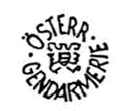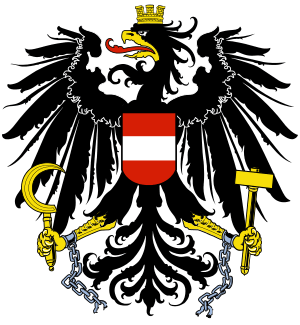British Markings
Die Geschichte des britischen Bajonetts reicht bis ins 17. Jahrhundert zurück, und aus diesem Grund ist das britische Bajonett eine der interessanteren Arten von Militaria zum Sammeln. Das maßgebliche Werk zu diesem Thema ist zweifellos British & Commonwealth Bajonett, von Skennerton und Richardson (ISBN 0-949749-04-4, Copyright 1986, veröffentlicht von Ian D. Skennerton, vertrieben in Australien von Arms & Militaria Press, PO Box 80, Labrador 4215, Australien, und in Nordamerika von Arms & Militaria Press, PO Box 5659 Grants Pass, OR 97527 USA, und von I.D.S.A. Books, P.O. Box 1457, Piqua, OH 45356 USA), von denen die meisten der hier präsentierten Informationen stammen dankbar erbeutet. Informationen über die Chiffren wurden entnommen aus British Enfield Rifles, Volume 1, SMLE (No. 1) Rifles Mk I and Mk III, von Charles R. Stratton (ISBN 1-882391-16-0, herausgegeben von North Cape Publications, P.O. Box 1027, Tustin, CA 92781 USA).
Die Informationen über britische Regimentsmarkierungen stammen aus britischen Militärbajonetten von 1700 bis 1945, von R.J. Wilkinson Latham, 1967, Hutchinson & Co. (Herausgeber) LTD., 178-202 Great Portland Street, London W.1.
Hersteller und Waffenschmiede stempelten auf jedes Bajonett Informationen darüber, wann und von wem es hergestellt wurde, wann und wo es überarbeitet wurde (falls überhaupt) und dergleichen. In der Lage zu sein, diese Markierungen zu lesen und zu interpretieren, ermöglicht es dem Sammler, einige Informationen über die Waffe zu ermitteln und möglicherweise einen Teil ihrer Geschichte abzuleiten, was alles zur Sammelbarkeit des Stücks beiträgt. Die folgenden Tabellen und Diagramme veranschaulichen die gebräuchlicheren Markierungen auf britischen und Commonwealth-Bajonetten, geordnet nach Ländern.
Viele Markierungen lassen sich auf weitere Produkte der britischen Streitkräfte übertragen. Hierzu gehört auch die Produktion der Gewehre und anderen militärischen Gegenstände.
Elemente in Kursivschrift sind Aktualisierungen, die auf persönlichen Mitteilungen beruhen.
Terminologie – Bezeichnung der Teile
Die Namen der verschiedenen Teile der Bajonette und der zugehörigen Scheiden sind in der folgenden Tabelle aufgeführt und in den folgenden Diagrammen dargestellt.
| Number | Name | Number | Name |
|---|---|---|---|
| 1 | False edge | 17 | Shoulder |
| 2 | True edge | 18 | Locking ring |
| 3 | Fuller or blood groove | 19 | Elbow |
| 4 | Muzzle ring | 20 | Zig-zag slot |
| 5 | Crosspiece or crossguard | 21 | Chape |
| 6 | Bolt | 22 | Rivet |
| 7 | Grip | 23 | Locket |
| 8 | Pommel | 24 | Pipe back |
| 9 | Locking bolt | 25 | Ricasso |
| 10 | Press stud | 26 | Finial |
| 11 | Mortise slot | 27 | Quillon |
| 12 | Drain hole | 28 | Locking bolt spring |
| 13 | Frog stud | 29 | Knuckle guard |
| 14 | Mouthpiece | 30 | Hilt |
| 15 | Tip or point | 31 | Wire lace |
| 16 | Socket |

Knife Bayonet

Sword Bayonet – 1

Sword Bayonet – 2

Sword Bayonet – 3

Bei in Großbritannien hergestellten Waffen besteht die Chiffre aus einer stilisierten Krone (deren Stil sich im Laufe der Zeit geändert hat) über den Initialen des regierenden Monarchen. Die Initialen, der Monarch und die Regierungsdaten sind in der folgenden Tabelle angegeben.
| Initials | Monarch | Dates |
|---|---|---|
| V.R. | Victoria Regina (Queen Victoria) | 1837-1901 |
| E.R. | Edwardius Rex (King Edward VII) | 1901-1910 |
| G.R. | Georgius Rex (King George V) | 1911-1936 |
| E.R. | Edwardius Rex (King Edward VIII) | 1936 |
| G.R. | Georgius Rex (King George VI) | 1937-1952 |
Bei in Indien hergestellten Waffen, die vor etwa 1952 hergestellt wurden, besteht die Chiffre ebenfalls aus einer stilisierten Krone über den Initialen des amtierenden Monarchen, aber den Initialen wird der Buchstabe “I” (für Imperator) hinzugefügt. Ungefähr 1952 (einige Jahre nach der indischen Unabhängigkeit) wurde die Krone in ein Ashoka (vier geduckte Löwen) geändert und die Initialen wurden in R.F.I. für Rifle Factory Ishapore geändert. Die entsprechenden Initialen unter der Chiffre sind in der folgenden Tabelle angegeben.
(Die Chiffren auf in Indien hergestellten Waffen sind etwas anders. Ich kann nicht sicher sein, dass die folgenden Informationen für in Indien hergestellte Bajonette gelten (da ich keine besitze), aber sie gelten für Gewehre, und daher werden die Informationen hier bereitgestellt der Vollständigkeit halber.)
| Initials | Dates |
|---|---|
| E.R.I., G.R.I | 1907-1943 |
| G.R.I. | 1944-1951 |
| R.F.I. | 1905-1970 |
In der folgenden Tabelle sind die wichtigsten Markierungen aufgeführt, die auf in Großbritannien hergestellten Bajonetten zu finden sind. Während (und nach?) des Zweiten Weltkriegs stempelte Großbritannien Herstellungscodes (ähnlich wie Deutschland) anstelle von Herstellernamen auf Waffenteile. Die folgende Tabelle enthält nicht alle Codes, sondern nur die für Bajonette verwendeten, wie in Skennertons Buch identifiziert.
Hinweis: Die Codes des Zweiten Weltkriegs bestanden aus einem Buchstaben (“N”, “M” oder “S”), gefolgt von einer Zahl. „N“ steht für „Norden“, „M“ für „Mittelland“ und „S“ für „Süden“.
| Marking | Meaning |
|---|---|
 or or  | Government acceptance mark |
 | Sale or sold out of service mark |
| ’89 | Manufacture date (1889) |
| 11 17 | Manufacture date (November 1917) |
| CHAPMAN | J. Chapman; maker |
| EFD, D, or ENFIELD | Royal Arms Factory, Enfield; maker or repairer (D – post 1925) |
| J A C | J. Chapman; maker |
| MOLE | R. Mole; maker |
| RE | Remington; maker |
| SANDERSON | Sanderson Bros. & Neubold; maker |
| S & N | Sanderson & Neubold; maker |
| W | Winchester; maker |
| WILKINSON | Wilkinson Sword Company; maker |
| W.S.C. | Wilkinson Sword Company; maker |
 | Hopkinson; maker |
 | Royal Ordnance Factory, Poole |
| B. & J. S. Ltd | B. & J. Sippel Ltd. |
 | Vickers, Crayford; maker |
| F.F. & S. Ltd | F. Fisher & Sons, Ltd. |
| F 191 | France-British Electrical |
| H.G. | Barrow, Hepburn & Gale Ltd. |
| J.W.(S) Ld | J. Wilson Ltd. |
| S. M. | Hopkinson contract (L1A4 bayonet) |
| S.M.C. or S.M. | Singer Manufacturing Co.; maker |
 | Scottish Motor Traction Co. |
 | Cinque Port Artillery |
| V.N.S. | Viners Ltd. |
| M 1 | Accles & Pollack |
| M 44 | J.B. Brooks & Co. Ltd. |
| M 47 A | Birmingham Small Arms (B.S.A.), Small Heath; maker |
| M 53 | Camelinat Ltd. |
| M 58 | Jabez, Cliff & Co. Ltd. |
| M 78 | Elkington; maker |
| M 121 | W.J. Hill Ltd. |
| M 158 | J. Lucas Ltd. |
| M 166 | M.C.L. & Repetition Co. Ltd. |
| M 198 | Morris Springs |
| N 26 | F. Fisher & Sons, Ltd. |
| N 30 | Howard & Bullough; maker |
| N 56 | Prince-Smith & Stells; maker |
| N 64 | Sheffield Steel Products |
| N 67 | Singer Manufacturing Co.; maker |
| N 69 | London Sand Blast & Decorative Glass Works |
| N 76 | Temporal Spring Co. Ltd. |
| N 79 | Viners, Ltd.; maker |
| N 96 | Baird Engineering; maker |
| N 152 | B. & J. Sippel Ltd. |
| N 165 | Restwell Spring Co. |
| N 187 | Radcliffe; maker |
| S 7 | Auto Engineering |
| S 9 | Barrow, Hepburn & Gale Ltd. |
| S 41 | Grundy, Ltd.; maker |
| S 67 | London Sand Blast |
| S 68 | Lines Bros. Ltd. |
| S 128 | Wembley Tool Co. |
| S 158 | Bramlands Engineering |
| S 169 | Chiswell Wire Co. |
| S 191 | France-British Electrical |
| S 195 | H.E. Gibbs |
| S 200 | Gramophone Co. |
| S 201 | Grant & West Ltd. |
| S 229 | McLoughlin Machinery Ltd. |
| S 268 | Shalston Engineering |
| S 286 | Vanden Plas (Eng) 1923 Ltd. |
| S 294 | Wilkinson Sword Company; maker |
| S 356 | N.J. Edmunds Ltd. |
| S 361 | S.E. Norris & Co. |
| S 376 | Lewisham Engineering; maker |
| S 377 | Joe Thompson |
| E-M | Enfield-Martini |
| R.A.M.C. | Medical Corps |
| U.M.P. | Ulster Mounted Police |
| ONTEX | Retailer’s name (commercial bayonet) |
 | Board of Ordnance acceptance mark |
 | War Department acceptance mark (discontinued in 1895, although it’s been reported on examples dated 1897 as well) |
 | Enfield Royal Small Arms Factory (R.S.A.F.) inspection mark |
 | Birmingham R.S.A.F. inspection mark |
 | B.S.A. inspection mark |
 | Wilkinson inspection mark |
 | Birmingham R.S.A.F. repair mark |
 | Solingen mark, British inspector |
 | Liege (Belgium) mark, British inspector |
 | French mark, British inspector |
 | Cancellation mark |
| * | Corrosion or rust mark |
| N | Naval service |
| L | Land (Army) service |
| D.P. | Drill purpose |
 | Downgraded, usually to drill purpose |
 | Bending mark, proof of blade |
| Marking | Meaning |
|---|---|
 | Department of Defense |
 | Department of Defense |
| A.M.C. | Army Medical Corps (New South Wales) |
| LITHGOW | Manufactured at Lithgow |
| LYSAGHT | Manufacturer |
| MA | Manufactured at Lithgow |
| MANGROVITE | MANGROVITE Belting Pty. Ltd. |
| N.S.W. | New South Wales |
| N.S.W.G. | New South Wales Government |
| OA | Manufactured at Orange |
| P.P.M.S.G. | Victorian marking (Port Phillip) |
| Q.N.C. | Queensland Naval Cadets |
| S.A. | South Australia |
| SLAZ | Slazenger (wood only) |
| V.A. | Volunteer Artillery (New South Wales) |
| V.V. | Victorian Volunteers |
| W | Waxed finish, scabbard |
| W.T. | William Tranter |
 | Colt (US manufacture) (but possibly not; additional research underway) |
 | Queensland Government |
 | Queensland Police |
| 1 M.D. | 1st Military District (Queensland) |
| 2 M.D. | 2nd Military District (N.S.W.) |
| 3 M.D. | 3rd Military District (Victoria) |
| 4 M.D. | 4th Military District (South Australia) |
| 5 M.D. | 5th Military District (Western Australia) |
| 6 M.D. | 6th Military District (Tasmania) |
 | Australian Forces, or Royal Australian Air Force (not certain) |
 | Early Lithgow inspection mark |
 | Lithgow inspection mark |
 | Orange inspection mark |
 | Government acceptance mark |
 | Lithgow manufacture mark |
 | Early Lithgow proof mark |
 | Early Lithgow manufacture mark, with pattern acknowledgement (1907) |
 | Australian manufacture mark with pattern acknowledgement, as seen on Pattern 1907 and Owen bayonets |
 | Scabbard marking |
 | Bend test mark, proof |
| 9/47/R | Refurbished, with month & year |
| 10 ’44 | Month and year of manufacture |
 | Sale mark |
| Marking | Meaning |
|---|---|
 | Canadian Government ownership mark |
 | Canadian Government ownership mark (post-WWII) |
| B C B G A | British Columbia Brigade fo Garrison Artillery |
| B C P R | British Columbia Provisional Regiment of Garrison Artillery |
| C R I | Canadian Regiment of Infantry |
| D C | Dominion of Canada |
| H L I | Hochelaga Highland Light Infantry (reserve unit from Galt, Ontario) |
| L C | Lower Canada |
| L C M | Lower Canada Militia |
| M D | Militia & Defense |
| M & D | Militia & Defense |
| NELLA | Nella Cutlery, maker of C7 bayonet |
| O R | Oxford Rifles |
| P E I | Prince Edward Island Regiment |
| P E I G A | Prince Edward Island Garrison Artillery |
| P W R | Prince of Wales Regiment |
| Q C B I | Queens County Battalion of Infantry |
| R C A F | Royal Canadian Air Force |
| R C N | Royal Canadian Navy |
| R C R | Royal Canadian Rifle Regiment |
| R R C I | Royal Canadian Regiment of Infantry |
| s | for Spencer rifle (found on elbow) |
| U C | Upper Canada |
| U C M | Upper Canada Militia |
| V M I | Volunteer Militia Infantry |
| V M R | Volunteer Militia Rifles |
| V R | Victoria Rifles |
 | Ross Factory inspection mark |
 | Quebec Arsenal inspection mark |
 | Long Branch |
 | Canadian Arsenals Ltd. |
 | Canadian Arsenals Ltd. |
| 10/15 | Acceptance date (into service) |
 | Cancellation mark |
 | Stevens-Savage (United States) |
 | Stevens-Savage (United States) |
 | Victory Plastics (U.S.-made Scabbards) |
| Marking | Meaning |
|---|---|
 | East India Co. ownership marking, Quartered Heart |
| (script) | Various Indian script letters for issue marks and numbers |
| R.F.I. | Rifle Factory Ishapore |
| F R 55 | Factory Repair, 1955 |
| J.U. | (unknown) Jhelum Arsenal |
| M.I.L. | Metal Industries, Lahore |
| N.W.R. | North West Railways |
| S & R | Swinburn & Son (?) |
 | Bend test mark, proof |
| 1 41 | Date of manufacture, January 1941 |
 | Indian Government ownership marking, later version of E.I.G. mark |
 | East India Government ownership mark, pre-Great War |
 | Inspection mark, for East India Co. |
 | Inspection mark, for East India Co. |
 | Ishapore inspection mark |
 | Indian inspection mark |
| 12 / 14 | Conversion date, December 1914 |
| Marking | Meaning |
|---|---|
 | Ownership marking |
 | Ownership marking |
| Marking | Meaning |
|---|---|
| S.A. | South Africa |
| S.A.P. | South African Police |
| MAKERS S.A.R. & H | South African Railways and Harbors Dept. |
| A E Co | Manufacturer’s initials |
 | Cape Government, South Africa |
 | Union of South Africa |
 | South Africa Defense Corps (current) |
| Marking | Meaning |
|---|---|
| G.S. | George Salter; maker |
| P.O.F. | Pakistan Ordnance Factory |
Einige britische Bajonette haben Regimentsmarkierungen auf dem Knauf (und möglicherweise anderswo). Diese identifizieren das Regiment der britischen Armee, an das das Bajonett ausgegeben wurde; Wenn ein Bajonett an ein anderes Regiment neu ausgegeben wurde, wurden die ursprünglichen Regimentsmarkierungen normalerweise so ausgekleidet, und die neuen Regimentsmarkierungen wurden in der Nähe der ursprünglichen gestempelt.
Um die Regimentsmarkierungen richtig zu entschlüsseln, muss man wissen, wofür die Abkürzungen und Buchstaben stehen. Die folgende Liste fasst die Regimentsabkürzungen ab 1881 zusammen. Zahlen vor 1881 sind hinsichtlich des Datums der Änderung schwer festzustellen. Einige Regimenter haben vor und nach 1881 die gleiche Nummer, aber die Mehrheit hat sich geändert, dh vor 1881 waren 20th Foot East Devons; nach 1881 20th Foot sind Lancashire Fusiliers.
| Pre-1881 Mark | Regiment | Post-1881 Abbreviation |
|---|---|---|
| (none) | The Royal Garrison Artillery | R.G.A. |
| S. & M. | The Corps of Royal Engineers (Sappers & Miners) | R.E. |
| 1st Foot Gds. | The Grenadier Guards (The First Regiment of Guards) | G.G. |
| 2nd Foot Gds. | The Coldstream Guards (The Coldstream Regiment of Foot Guards) | C.G. |
| 3rd Foot Gds. | The Scot Guards (The Scots Fusilier Guards) | S.G. |
| (none) | The Irish Guards | I.G. |
| (none) | The Welch Guards | W.G. |
| 1st Foot | The Royal Scots (Lothian Regiment) | R.S. |
| 2nd Foot | The Queen’s (Royal West Surrey Regiment) | W.SR. |
| 3rd Foot | The Buffs (East Kent Regiment) | E.K. |
| 4th Foot | The King’s Own (Royal Lancaster Regiment) | LAN. |
| 5th Foot | The Northumberland Fusiliers | N.F. |
| 6th Foot | The Royal Warwickshire Regiment | WK. |
| 7th Foot | The Royal Fusiliers (The City of London Regiment) | R.F. |
| 8th Foot | The King’s (Liverpool Regiment) | LI. |
| 9th Foot | The Norfolk Regiment | NK. |
| 10th Foot | The Lincolnshire Regiment | LIN. |
| 11th Foot | The Devonshire Regiment | DVN. |
| 12th Foot | The Suffolk Regiment | SK. |
| 13th Foot | Prince Albert’s (Somerset Light Infantry) | ST. |
| 14th Foot | The Prince of Wales’s Own (West Yorkshire Regiment) | W.Y. |
| 15th Foot | The East Yorkshire Regiment | E.Y. |
| 16th Foot | The Bedfordshire Regiment | BD. |
| 17th Foot | The Leicestershire Regiment | LEIC. |
| 18th Foot | The Royal Irish Regiment | R.I. |
| 19th Foot | Alexandra, Princess of Wales’s Own (Yorkshire Regiment) | YK. |
| 20th Foot | The Lancashire Fusiliers | L.F. |
| 21st Foot | The Royal Scots Fusiliers | S.F. |
| 22nd Foot | The Cheshire Regiment | CH. |
| 23rd Foot | The Royal Welsh Fusiliers | W.F. |
| 24th Foot | The South Wales Borderers | S.W.B. |
| 25th Foot | The King’s Own Scottish Borderers | K.O.S.B. |
| 26th Foot | The Cameronians (Scottish Rifles) | S.R. |
| 27th Foot | The Royal Inniskilling Fusiliers | IN.F. |
| 28th Foot | The Gloucestershire Regiment | G.R. |
| 29th Foot | The Worcestershire Regiment | W.R. |
| 30th Foot | The East Lancashire Regiment | E.L. |
| 31st Foot | The East Surrey Regiment | E.SR. |
| 32nd Foot | The Duke of Cornwall’s Light Infantry | CLL. |
| 33rd Foot | The Duke of Wellington’s (West Riding Regiment) | W.RID. |
| 34th Foot | The Border Regiment | B.R. |
| 35th Foot | The Royal Sussex Regiment | SX. |
| 36th Foot | The Worcestershire Regiment (2nd Battalion) | W.R. |
| 37th Foot | The Hampshire Regiment | HTS. |
| 38th Foot | The South Staffordshire Regiment | S.STF. |
| 39th Foot | The Dorsetshire Regiment | DT. |
| 40th Foot | The Prince of Wales’s Volunteers (South Lancashire Regiment) | S.L. |
| 41st Foot | The Welch Regiment | WEL. |
| 42nd Foot | The Black Watch (Royal Highlanders) | R.H. |
| 43rd Foot | The Oxfordshire and Buckinghamshire Light Infantry | OX. |
| 44th Foot | The Essex Regiment | EX. |
| 45th Foot | The Sherwood Foresters (Nottinghamshire and Derbyshire Regiment) | DY. |
| 46th Foot | The Duke of Cornwall’s Light Infantry (2nd Battalion) | CLL. |
| 47th Foot | The Loyal North Lancashire Regiment | N.L. |
| 48th Foot | The Northamptonshire Regiment | NN. |
| 49th Foot | Princess Charlotte of Wales’s (Royal Berkshire Regiment) | BRK. |
| 50th Foot | The Queen’s Own (Royal West Kent Regiment) | W.KT. |
| 51st Foot | The King’s Own (Yorkshire Light Infantry) | Y.L.I. |
| 52nd Foot | The Oxfordshire and Buckinghamshire Light Infantry (2nd Battalion) | OX. |
| 53rd Foot | The King’s Shropshire Light Infantry | SH. |
| 54th Foot | The Dorsetshire Regiment (2nd Battalion) | DT. |
| 55th Foot | The Border Regiment (2nd Battalion) | BR. |
| 56th Foot | The Essex Regiment (2nd Battalion) | EX. |
| 57th Foot | The Duke of Cambridge’s Own (Middlesex Regiment) | MX. |
| 58th Foot | The Northamptonshire Regiment (2nd Battalion) | NN. |
| 59th Foot | The East Lancashire Regiment (2nd Battalion) | E.L. |
| 60th Foot | The King’s Royal Rifle Corps | K.R.R. |
| 61st Foot | The Gloucestershire Regiment (2nd Battalion) | G.R. |
| 62nd Foot | The Duke of Edinburgh’s (Wiltshire Regiment) | WTS. |
| 63rd Foot | The Manchester Regiment | MAN. |
| 64th Foot | The Prince of Wales’s (North Staffordshire Regiment) | N.STF. |
| 65th Foot | The York and Lancaster Regiment | Y.&L. |
| 66th Foot | The Royal Berkshire Regiment (2nd Battalion) | BRK. |
| 67th Foot | The Hampshire Regiment (2nd Battalion) | HTS. |
| 68th Foot | The Durham Light Infantry | DM. |
| 69th Foot | The Welch Regiment (2nd Battalion) | WEL. |
| 70th Foot | The East Surrey Regiment (2nd Battalion) | E.SR. |
| 71st Foot | The Highland Light Infantry | H.L.I. |
| 72nd Foot | The Seaforth Highlanders (Ross-shire Buffs, The Duke of Albany) | SEA. |
| 73rd Foot | The Black Watch (The Royal Highlanders, 2nd Battalion) | R.H. |
| 74th Foot | The Highland Light Infantry (2nd Battalion) | H.L.I. |
| 75th Foot | The Gordon Highlanders | GOR. |
| 76th Foot | The Duke of Wellington’s (West Riding Regiment) (2nd Battalion) | W.RID. |
| 77th Foot | The Middlesex Regiment (2nd Battalion) | MX. |
| 78th Foot | The Seaforth Highlanders (2nd Battalion) | SEA. |
| 79th Foot | The Queen’s Own Cameron Highlanders | CAM. |
| 80th Foot | The South Staffordshire Regiment (2nd Battalion) | S.STF. |
| 81st Foot | The Loyal North Lancashire Regiment (2nd Battalion) | N.L. |
| 82nd Foot | The Prince of Wales’s Volunteers (South Lancashire Regiment) (2nd Battalion) | S.L. |
| 83rd Foot | The Royal Irish Rifles (1st Battalion Royal Ulster Rifles) | R.I.R. |
| 84th Foot | The York and Lancaster Regiment (2nd Battalion) | Y.&L. |
| 85th Foot | The King’s Shropshire Light Infantry (2nd Battalion) | S.H. |
| 86th Foot | The Royal Irish Rifles (2nd Battalion Royal Ulster Rifles) | R.I.R. |
| 87th Foot | Princess Victoria’s (Royal Irish Fusiliers) | R.I.F. |
| 88th Foot | The Connaught Rangers | CT. |
| 89th Foot | Princess Victoria’s (Royal Irish Fusiliers) (2nd Battalion) | R.I.F. |
| 90th Foot | The Cameronians (Scottish Rifles) (2nd Battalion) | S.R. |
| 91st Foot | Princess Louise’s (Argyll and Sutherland Highlanders) | A.&S.H. |
| 92nd Foot | The Gordon Highlanders (2nd Battalion) | GOR. |
| 93rd Foot | Princess Louise’s (Argyll and Sutherland Highlanders) (2nd Battalion) | A.&S.H. |
| 94th Foot | The Connaught Rangers (2nd Battalion) | CT. |
| 95th Foot | The Sherwood Foresters (2nd Battalion) | DY. |
| 96th Foot | The Manchester Regiment (2nd Battalion) | MAN. |
| 97th Foot | The Queen’s Own (Royal West Kent) (2nd Battalion) | W.KT. |
| 98th Foot | The Prince of Wales’s (North Staffordshire Regiment) (2nd Battalion) | N.STF. |
| 99th Foot | The Duke of Edinburgh’s (Wiltshire Regiment) (2nd Battalion) | WTS. |
| 100th Foot | The Prince of Wales’s Leinster Regiment (Royal Canadians) | LEIN. |
| 101st Foot | The Royal Munster Fusiliers (Royal Bengal Fusiliers) | M.F. |
| 102nd Foot | The Royal Dublin Fusiliers (Royal Madras Fusiliers) | D.F. |
| 103rd Foot | The Royal Dublin Fusiliers (The Royal Bombay Fusiliers) | D.F. |
| 104th Foot | The Royal Munster Fusiliers (Bengal Fusiliers) | M.F. |
| 105th Foot | The King’s Own (Yorkshire Light Infantry) (2nd Battalion) (The Madras Light Infantry) | Y.L.I. |
| 106th Foot | The Durham Light Infantry (2nd Battalion) (Bombay Light Infantry) | DM. |
| 107th Foot | The Royal Sussex Regiment (2nd Battalion) (Bengal Infantry) | SX. |
| 108th Foot | The Royal Inniskilling Fusiliers (2nd Battalion) (Madras Infantry) | IN.F. |
| 109th Foot | The Prince of Wales’s Leinster Regiment (Royal Canadians) (2nd Battalion) (Bombay Infantry) | LEIN. |
| (none) | 1st, 2nd, 3rd and 4th Battalion The Rifle Brigade (The Prince Consort’s Own) | R.B. |
| L.T.C. | The Royal Army Service Corps (Land Transport Corps) | R.A.S.C. or A.S.C. |
| A.M.D. | The Royal Army Medical Corps (Army Medical Dept.) | R.A.M.C. or A.M.C. |
| A.C.D. | The Royal Army Ordnance Corps (Army Commisariat Dept.) | R.A.O.C. or A.O.C. |
| M.M.P. | Military Mounted Police |
| M.F.T. | Military Foot Police |
| R.M.C. | Royal Military College |
| R.M.A. | Royal Military Academy |
| S.M. | School of Musketry |
Die Regimentsmarkierungen werden normalerweise (aber nicht immer) in der folgenden Form ausgedrückt:
(regiment)
(company)
(weapon number)
For example,
LEIN
3
42
decodes to the 42nd bayonet of the 3rd Company 1st Battalion of the Leinster Regiment.
Die Markierungen für Freiwillige / Miliz / Reserve sind unterschiedlich und haben normalerweise (aber nicht immer) das folgende Format:
(regiment)
(company)
Als Beispiel:
3 MXR
3
Entschlüsselt als 3rd Company, 3rd Middlesex Rifle Volunteers.
V = Volunteer
Y = Yeomanry
M = Militia
R = Reserve
Die Platzierung dieser Markierungen ist in der folgenden Tabelle angegeben.
| Item | Location |
|---|---|
| triangular or socket bayonets | across the blade, close to the shoulder |
| sword bayonets | pommel, on the side away from the body when worn |
| scabbards | frog stud or top of the mouthpiece |
Zur Veranschaulichung sind unten die Markierungen auf 2 britischen Bajonetten in meiner Sammlung und meine (nachweislich teilweise falsche) Dekodierung von den Exponaten:
United Kingdom
 | The United Kingdom of Great Britain and Ireland |
 | The Broad Arrow is the oldest and most common mark of British government ownership. Arrows may be alone, above or between letters.
Australia, Canada, India, New Zealand, Pakistan and South Africa have all used some variation of the Broad Arrow. |
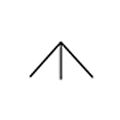 | The Broad Arrow can be as simple as three lines together. |
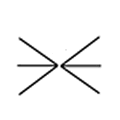 | Put two Broad Arrows nose-to-nose and you have a Sold-Out-of-Service symbol. |
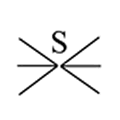 | Sometimes the Sold-Out-of-Service mark has a the letter “S”. |
 | War Department mark, adopted around 1856, may or may not have an arrow above or between the letters. |
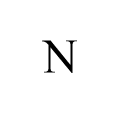 | The Royal Navy mark is a simple N found on rifles, bayonets and oilers. Not much larger than 1/4 inch (4mm), the mark on rifles can easily be missed. (Hint: on Enfield rifles, start by looking on the left side of the buttsocket.) |
AUSTRALIA – Colonial Governments
 | Six separate colonies until 1901, each colonial government had it’s own military, naval and police forces as well as individual variations of government mark. |
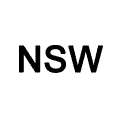 | New South Wales First colony on the new continent, the broad arrow was not as widely used as part of the government mark. Other letters and marks may appear above or below the NSW mark. |
 | Victoria Second largest colony in Australia, the broad arrow does not appear as widely used as elsewhere. Other letters and marks may appear above or below the VIC mark. |
 | Queensland separated from New South Wales in 1859 and quickly established it’s own Navy, Police and Defense Force. The Queensland Government mark has several variations. |
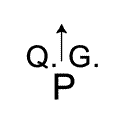 | Queensland Police |
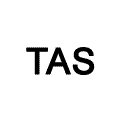 | Tasmania is the furthest south and was the second Australian colony to be granted self-government. We have not seen any examples of the Broad Arrow used with the TAS mark. |
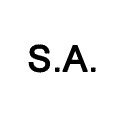 | South Australia Already a self-governing colony in 1834, South Australia was one of the first colonies to import British arms for it’s Defense Forces. The SA mark, with and without a Broad Arrow, can be very similar to marks of South Africa and India. |
 | West Australia We have not seen any examples of the Broad Arrow used with the WA mark. |
AUSTRALIA – National Government
 | The Australian Colonies and Territories were formerly inaugurated as a self-governing Commonwealth of the British Empire in 1901. At that time, Australian forces were organized solely for home defence. The Australian Regular Forces (2,862 in 1914) were backed by the part-time volunteer militia (Citizen Military Forces (CMF – around 80,000 men in 1914). [1] |
 | Citizen Military Forces After federation, the independent colonial military and naval forces came under the control of the new Commonwealth government. Military Districts were established, mostly along earlier colonial (now state) boundaries. This table outlines the 1911 structure; the Military Districts were reorganized several times (1939, 1942, 1950, 1970’s) and were finally disbanded 1997. [2] |
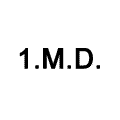 | 1st Military District, Queensland and the Northern Territory. The territories of Papua and New Guinea were allocated to the 1MD afte the Great War (1914-1919). |
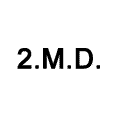 | 2nd Military District, New South Wales |
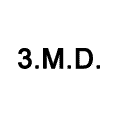 | 3rd Military District, Victoria |
 | 4th Military District, South Australia |
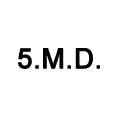 | 5th Military District, West Australia |
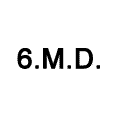 | 6th Military District, Tasmania |
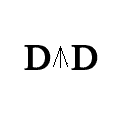 | Defense Department. This mark is still in use. |
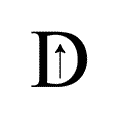 | Probably the most commonly encountered mark of Australian ownership, this mark was in widespread use from about 1910. |
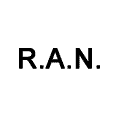 | Royal Australian Navy. Following Federation in 1901, the naval forces of the various colonies were integrated into a national force, the Commonwealth Naval Forces. The title “Royal” was granted in 1911. |
 | Royal Australian Air Force. The Australian Flying Corps (AFC) was established in 1912 as part of the Australian Army. It was disbanded in December 1919, it’s assets assigned to the newly formed Australian Air Corps (AAC) in January 1920, jointly overseen by the Army and Navy. The AAC was disbanded in March 1921 and immeadiately succeded by the new Australian Air Force, a separate organization. The “Royal” prefix was added August 1921. |
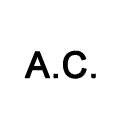 | Australian Commonwealth. This mark is seen 1901 – 1910 and gradually disappeared in favor of the D-Arrow mark. Often found within a shield, or below a shield with a kangaroo within. Usually found on the right buttstock of early Lithgow rifles. Often very faint and easily overlooked. |
 | Australian Commonwealth. This mark is seen 1901 – 1910 and gradually disappeared in favor of the D-Arrow mark. Usually found on the right buttstock of early Lithgow rifles. Often very faint and easily overlooked. |
CANADA – Provincial Governments
 | The Dominion of Canada was formed in 1867 by confederation of the provinces of Ontario, Quebec, Nova Scotia and New Brunswick. Manitoba was added in 1870; British Columbiain 1871, Prince Edward Island in 1873, Saskatchewan and Alberta in 1905. The Red Ensign with a shield emblazed with each provincial coat-of-arms was Canada’s flag 1905 – 1922. |
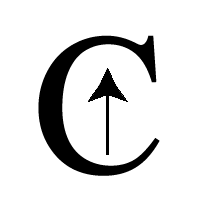 | The ornate “C” with Broad Arrow was used by all provinces as a government mark. |
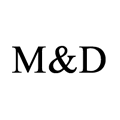 | Militia & Defense. Commonly found on pre-WWI (1914) arms. |
CANADA – National Government
 | In 1921 Canada adopted a coat-of-arms to replace the rather complex and crowded shield used previously. The Red Ensign remained in use until replaced by the Maple Leaf flag in 1965. |
 | The ornate “C” with Broad Arrow stayed in use throughout Canada. |
 | The much simplified C-tripod first appears on WWI (1914-1919) ammuntion headstamps. It reproduces well in small sizes and was later used extensively at the Long Branch rifle production factory 1940-1945. |
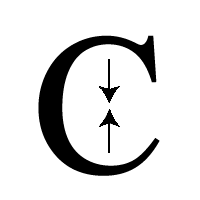 | This version of the C-Sold-Out-of Service mark is rarely seen. |
 | Two nose-to-nose Broad Arrows is a common Sold-Out-of-Service symbol. |
 | Canadian Officers Training Corps 1912 – c. 1968. |
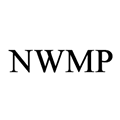 | North West (or North-West) Mounted Police. The North-West Territories (NWT: French les Territoires du Nord-Ouest) is not a province, but a large territory (currently 1.2M kilometers, much reduced from it’s pre-1900 size) north of the 60th parallel in Canada. This is one of the marks specifically associated with the force sent to police that huge territory. The name of the Force changed to Royal North West Mounted Police in 1904. The RNWMP amalgamated with the Dominion Police in early 1920 as the new Royal Canadian Mounted Police. |
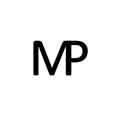 | Royal Canadian Mounted Police. Sometimes seen as M.P. Found on some No.4 rifles. |
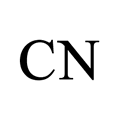 | Canadian Navy. Also seen with a Broad Arrow between the letters. |
BRITISH INDIA
 | Regarded as Britain’s colonial jewel, the territory once known as the Indian Empire is now divided into the independent republics of India, Burma, Pakistan and Bangladesh. The army of British India was made up of all volunteer Indian troops commanded by British officers and trained and equipped on the British pattern. Often overlooked, Indian Army units served with distinction on the Western Front in WWI and carried the main burden of fighting against Turkey in Mesopotamia (modern Iraq) as well as the world’s last and greatest calvary army in Palestine. By the end of the Great War India had sent more than 1,300,000 volunteer soldiers overseas. The Union Jack flew over the Indian Empire until 1947. |
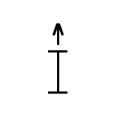 | Many of the Indian Government marks are variations of the letter I and a Broad Arrow. |
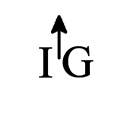 | Indian Government |
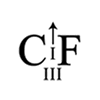 | Central Forces, Government of India. Found on a Mk III oiler. |
THE REPUBLIC OF INDIA
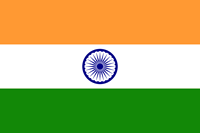 | India gained independence from Great Britain on 15th August 1947 following endorsement of a plan by the Muslim League and the All-India Congress to partition the sub-continent into two countries, India and Pakistan. The Tiranga was raised over the Red Fort as the the national flag of India on Independence Day, 1947. |
 | Until the British came along 2,000 years later, Ashoka the Great (273 BC – 232 BC) was the last time the Indian subcontinent had been united under a single ruler. His symbol, four lions standing back to back, standing atop a lotus beneath the Wheel of Law, was adopted as the emblem of the Government of India in 1950. Only three lions are visible; the fourth is hidden from view – and watching for enemies. |
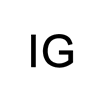 | Indian Government |
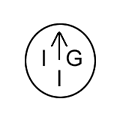 | Many of modern India’s marks are not much different from their pre-independence forebears. The Broad Arrow continues to be seen through the 1970’s. |
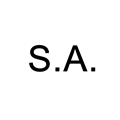 | The SA is presumed to mean Small Arms. |
NEW ZEALAND
 | A colony in 1841, New Zealand and the outlying dependent islands were granted status as an autonomous Dominion of the British Empire in 1907. All able-bodied males received some military training from age 12 in peacetime. The Territorial Army, formed in 1911, was a part-time national militia with about 25,000 men, which became the backbone of the new volunteer regiments established for imperial service overseas after 1914. The first New Zealand troops left almost immediately, occupying the German Pacific islands of Western Samoa without meeting resistance. The Blue Ensign flag was adopted in June 1902. |
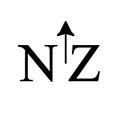 | The Broad Arrow was used widely in New Zealand markings. |
PAKISTAN
 | Pakistan gained independence from Great Britain on 15th August 1947 following endorsement of a plan by the Muslim League and the All-India Congress to partition the sub-continent into two countries, India and Pakistan. The flag was officially adopted on August 14, 1947. |
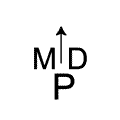 | The British-Indian parentage of this particular mark is easy to discern. The MD is presumed to be Ministry of Defence. This mark has been seen on 1950’s production No.4 rifles. |
SOUTH AFRICA – National Government
.gif) | The Union of South Africa was created on May 31, 1910 as a new dominion of the British Empire when the Cape Colony and Natal Colony were combined with the former Boer Republics of the Orange Free State (Orange Colony) and the South African Republic (Crown Colony of Transvaal).
The Red Ensign was adopted in 1910, although the Union Jack remained the official flag. The South African troops fighting in East Africa, the Middle East and in the trenches in France during the First World War did so under the Union Jack. |
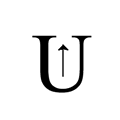 | After 1910 the Broad Arrow quickly makes an appearance within the U for the new Union of South Africa. |
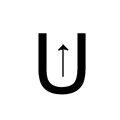 | The U-Broad Arrow continues in use through WWII, although the font of the U may be much simplified. |
 | Sometime after WWII a diamond makes it’s appearance within the South African U. We surmise that this mark was used after 31st May, 1961, when the Union of South Africa left the British Commonwealth and became the Republic of South Africa. This mark has been seen on both rifles and oilers. |
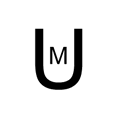 | Sometime after WWII an M makes it’s appearance within the South African U. We surmise that this mark made it’s appearance after 31st May, 1961, when the Union of South Africa left the British Commonwealth and became the Republic of South Africa. This mark has been seen on both rifles and oilers. |
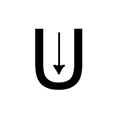 | A U with an “upside down” arrow has been found on a variety of South African kit, most of which appears to be WWII or later production. The mark, although South African, remains a mystery. This mark has been seen on both rifles and oilers. |
Other states
 |
BELIZE
|
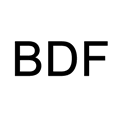 | Belize, formerly known as British Honduras, is a Caribbean country located on the northeastern coast of Central America. A British Crown Colony since 1862, Belize became independent of the United Kingdom on 21 September 1981. [5]
The Belize Defence Forces (BDF) was founded in 1978. The BDF stamp has been seen on the left receiver of the Lee-Enfield Rifle No.4. [06] |
 |
REPUBLIC OF CHINA
|
 | In 1888, the year the first Lee-Enfield rifles were introduced into British service, it was obvious that China’s two-hundred forty-four-year-old Qing Dynasty was in serious trouble. The First Opium War (1839-1842) lost Hong Kong to the British Empire; the Second Opium War (1856-1860) cost additional ports and territories and allowed British commercial interests to flood the country with cheap opium manufactured in India. [15] The First Sino-Japanese War (1894-1895) lost Korea as a tributary state and the Chinese mainland port of Weihaiwei. [19]. Fifty years of successive military humiliations by foreign barbarians and upstarts was the catalyst for a series of political upheavals that culminated in the 1911 Chinese Revolution, which overthrew China’s last imperial dynasty and established the Republic of China.
The 1911 Revolution birthed forty years of almost constant bloodletting, atrocities and massacres between the new National Government, opportunistic warlords and competing political factions. [20] Just about when everyone thought things couldn’t get worse, Imperial Japan invaded the three northwestern provinces of China in 1931; the conflict was expanded greatly after 1937. [21]
After 1937 the major warring factions in China, the Nationalist Party of China (Kuomintang – KMT) and the Communist Party of China (CPC), focused their efforts on defeating the Japanese. Once the Japanese had surrendered to the Allies (1945), the KMT and CCP quickly resumed the Chinese Civil War, later rebranded as the Chinese Communist Revolution. [22] The war ended (1949) with the Communists in control of mainland China and the Nationalists in control of the island of Taiwan – and has remained virtually unchanged since.
Revive China Society (1894) flag depicted. |
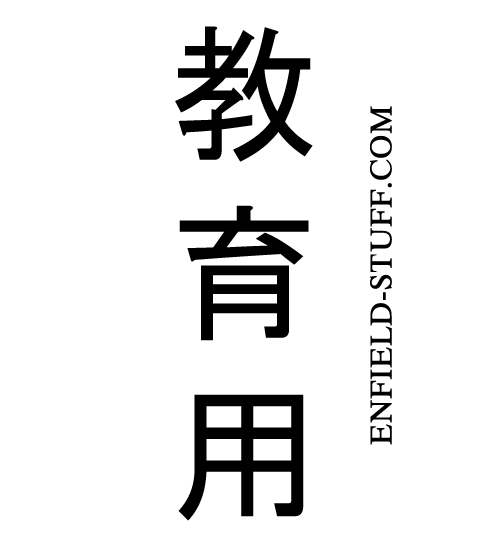 | Chinese characters (hanzi) found on the buttstock of a US Savage made Rifle No.4. Translation: “For Educational Use” (could also be “For Training Use”). [24]
While technically neutral/not at war with Imperial Japan in 1939, the US government supplied rifles and war materials to the Chinese Nationalists. A small number of Lee-Enfield Rifle No.4, marked “US Property” made their way across India to Nationalist/Kuomintang forces. |
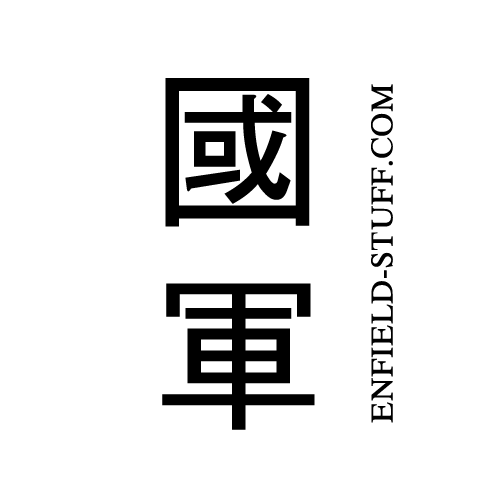 | Chinese characters (hanzi) written/scribed into the right receiver of a US Savage made Rifle No.4. Translation: “National Army” [24] [25]
|
 |
Greece
|
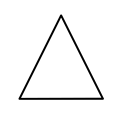 | Most of the Greek rifles we have seen are marked with a delta (triangle) on the knox form above Greek letters. The delta is associated with Royalist paramilitary forces that fought during the Greek Civil War (1944-1949). |
 | A cross pattée (also known as a croix formée, often called a Maltese Cross), is a type of Christian cross with arms that are narrow at the centre, and often flared in a curve or straight line shape, to be broader at the perimeter. Seen on Greek rifles as early as 1900, sometimes within a circle. [3] Royal Hellenic (Greek) Army. |
 |
HONG KONG
|
 | Ceded to Great Britain by the Qing Dynasty in 1842 after military defeat in the First Opium War (1839-1842). The colony was further expanded after the Second Opium War (1856-1860) when Britain obtained a 99-year lease on Hong Kong and the surrounding New Territories. [15]
Hong Kong was returned to China on 1 July 1997, after 156 years of British rule. [16]
HKP – HONG KONG POLICE. Markings seen on the backstrap of Enfield Revolver No.2 Mk I** in caliber.38. |
 |
INDONESIA
|
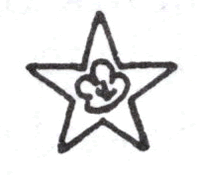 | Indonesia was formed from the colonies of the Dutch East India Company (Dutch: Vereenigde Oostindische Compagnie; VOC), which were taken over by the Dutch government in 1800. Dutch rule was overthrown by Imperial Japan (1942-1945). After Japan’s surrender to the Allies, and before the arrival of Dutch and British forces, Indonesia declared itself to be an independent republic. The British withdrew in late 1946, leaving the Dutch to sort things out with their former colony. The next three years saw two Dutch “police actions” as well as a communist rebellion. On 27 December 1949 the Republic of the United States of Indonesia was recognized as an independent country. [17]
This mark (5/16 inch; 7.937mm; 0.312 inches) has been found atop the knox form of both SMLE (Short, Magazine, Lee-Enfield) rifles and .303 Rifle No.4. [18] |
 |
KINGDOM OF IRAQ 1924-1958
|
 | Iraq was created by the British in 1920 out of the Ottoman Turkish provinces of Basra, Mosul and Baghdad. Throughout the 1920’s and 1930’s Britain supplied the Iraqi Army with weapons both from stores and by means of contracts with the Iraqi government. [12]
There are several versions/abbreviations of the Arabic letter(s) meaning army or military. The diacritical mark (dot) is sometimes ommited. [13] |
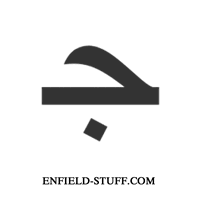 | In Arabic, the shape of a letter depends upon whether it appears in the beginning, the middle, or the end of a word – or stands by itself. This mark is simply another form of the one above. Both have been seen on Lee-Enfield rifles. [13]
|
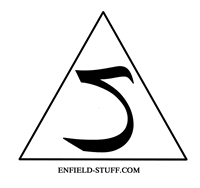 | To my untrained eye, this looks like the Arabic jeem in the top row, albeit reversed. This particular mark does not appear in any of my reference sources – but it is clearly there on the knox form of a Lee-Enfield rifle.
|
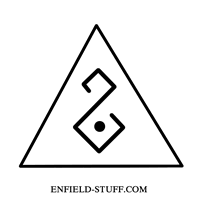 | Iraqi markings are typically found atop the knox form and often on the buttstock marking disc as well. Markings are usually – but not always – enclosed within a triangle.
This mark (left) has been seen on Lee-Enfield oilers, as well as rifles. This symbol was also part of the 1920’s Iraqi Air Force roundel. [13] |
 |
IRELAND
|
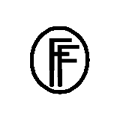 | Upon gaining independence in 1921, the new government of the Republic of Ireland formed a new national army. Weapons of this force were supplied by Britain, with the standard service rifle being the SMLE. These rifles were marked “FF” (Fianna Fail Gaelic for “Men of Destiny”). Throughout the 1920s and 1930s the Irish continued to purchase rifles from Britain, all of which were marked with the “FF” cartouche. [4] This practice was discontinued after WWII.
Marks usually found atop the knox form; the sharp-eyed collector may also spot the FF cartouche on the wood furniture. |
 | The Royal Irish Constabulary (RIC) was a quasi-military police force in Ireland from 1822-1922, when Ireland was part of the United Kingdom. Unique to Ireland was the RIC Carbine, a Lee-Enfield carbine outfitted to accept the P1888 bayonet.
The buttstock marking disc is usually stamped RIC and dated. The RIC was disbanded in 1922. |
 |
ISRAEL
|
 | The history of Israel’s Lee-Enfield rifles starts in the middle of the Great War (1914-1919), with the Sykes-Picot Agreement in 1916 [28], a secret agreement between the United Kingdom and France to partition the Ottoman Empire into spheres of influence. Britain would get Israel, Palestine, Jordan, southern Iraq and some Mediterranean ports; France would get southeastern Turkey, northern Iraq, Syria and Lebanon. The fact that much of this territory had already been promised to the local Arabs for assisting Allied Forces in defeating the Turks was a certainly a major reason to keep the Agreement secret. About the time the public learned of the Sykes-Picot Agreement, the British Government issued the Balfour Declaration, a public statement supporting “a national home for the Jewish people” in Palestine, a move, in part, to gain support among the worldwide Jewish community for the Allied war effort. [29] The two agreements, taken together, convinced many Arabs that the British had betrayed them.
The end of the war (1919) finds British forces throughout the Middle East with impossible promises made to competing interests. After that, it gets more complicated.
The bottom line (left) is Hebrew for Israeli Defense Force (IDF). Characters are read right-to-left. The top line is a common abbreviation for the IDF. These marks seen on Lee-Enfield oilers. |
 |
NAZI GERMANY
|
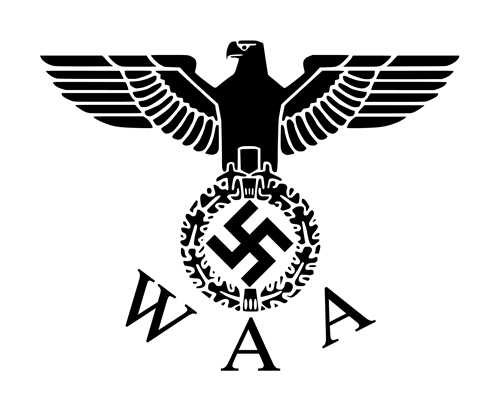 | Much like the view marks/inspection marks found on British manufactured Lee-Enfield rifles, Nazi Germany (1933-1945) made extensive use of inspection/acceptance marks called “Waffenamt” on almost everything used by all branches of German forces. [07]
The Waffenamt (WaA) was the German Army Weapons Agency responsible for the testing and acceptance of all weapons, equipment and ammunition before delivery to the Wehrmacht (Defense Force). [08]
Nazi Germany made extensive use of captured weapons (Beutewaffen), including the Lee-Enfield rifle. Captured weapons were often WaA marked. [11] |
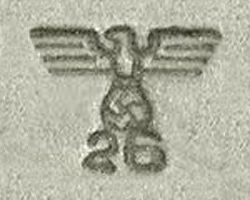 | The basic WaA symbol is of a Nazi eagle holding a swastika above the letters WaA. The Waffenamt code (WaA followed by a number) is the German inspection proof mark and can be found on firearms and equipment. There were thousands of WaA inspectors. There are also many, many variations of WaA inspection stamps. [10] |
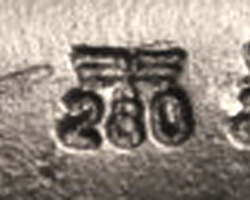 | The Wappenamt stamp can be very small ( 1/8 inch; 3.175mm; 0.125 inch – which is even smaller than some of the inspection marks found on Lee-Enfield rifles) and are easily overlooked, particularly on bayonets.
Waffenamt photos courtesy of Vern Bryant at www.GermanDaggers.com [10] |
 |
SINGAPORE
|
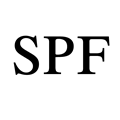 | Originally part of the Straits Settlements (1867), the Singapore Settlement was a British Territory until 1946, when Singapore became the Crown Colony of Singapore. In 1959 Singapore became fully independent, although still within the British Empire. In 1962 the people of Singapore voted to join the Federation of Malaysia; after three years of deep political and cultural unrest, Singapore became fully independent of Malaysia (1965).
Between 1867 and 1967 seven different flags, including Imperial Japan (1942-1945) and Malaysia (1962-1965), have flown over Singapore. The current flag, adopted 1959, is depicted. [14]
SPF – SINGAPORE POLICE FORCE. Seen on the frame of a Webley Mk IV .38 caliber revolver. |
 |
THAILAND
|
 | Siam (Thailand)’s history with the Kingdom of England dates back to 1612, during the reign of James I (1567-1625). In spite of intense pressure from many colonial powers, Siam has always maintained its independence from outsiders – a point of pride in Thailand. Siam renamed itself Thailand in 1939 [30]
In India, the Hindu god Visnu is often shown armed with a chakra, a spinning disk-like weapon with 108 serrated edges. [31] The Thai version of the chakra makes an official appearance in 1782, when Rama I established his rule. The King’s symbols included the divine weapons of Vishnu, the Chakri and the Trisula (a short bladed weapon). The Chakri dynasty has been the ruling house of the Kingdom of Thailand since 1782. [32]
The chakri, often called a “juk” in Thai (plural “juk-ree”) has been reported on a wide variety of small arms in Thailand. The number of teeth/serrated edges seen on the symbol varies between eight (8) and thirteen (13).
The chakri/juk has been seen on both the receiver and on the buttstock of Lee-Enfield rifles. |
 | The Wild Tiger Corps was a national paramilitary corps founded in Thailand in 1911 by King Vajiravudh (Rama VI). [33] Siam (Thailand) ordered 10,000 SMLE Mk III* rifles with P1907 bayonets from the Birmingham Small Arms Company in 1920. [34] The rifles were marked in Thai script. Both rifles and bayonets are marked with the symbol of a tiger’s head. [33]
Many of the leather scabbards were later replaced with sheet steel with the original locket and chape brazed on. [35] |






